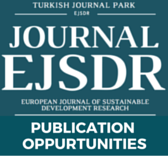Vojvodina
Vojvodina is an autonomous province of Serbia, located in the northern part of the country, in the Pannonian Plain. Novi Sad is the largest city and administrative center of Vojvodina and the second-largest city in Serbia. Vojvodina has a population of approximately 2 million (approximately 26.88% of the Serbian population excluding Kosovo, and 21.56% including it). It has a multi-ethnic and multi-cultural identity; there are more than 26 ethnic groups in the province, which has six official languages.
Vojvodina is situated in the northern quarter of Serbia, in the southeast part of the Pannonian Plain, the plain that remained when the Pliocene Pannonian Sea dried out. As a consequence of this, Vojvodina is rich in fertile loamy loess soil, covered with a layer of chernozem. It has a population of about 2 million (about 27% of Serbia's total). The region is divided by the Danube and Tisa rivers into: Bačka in the northwest, Banat in the east and Syrmia (Srem) in the southwest. A small part of the Mačva region is also located in Vojvodina, in the Srem District. Today, the western part of Syrmia is in Croatia, the northern part of Bačka is in Hungary, the eastern part of Banat is in Romania (with a small piece in Hungary), while Baranja (which is between the Danube and the Drava) is in Hungary and Croatia. Vojvodina has a total surface area of 21,500 km2 (8,300 sq mi). Vojvodina is also part of the Danube-Kris-Mures-Tisa euroregion. The Gudurica peak (Gudurički vrh) on the Vršac Mountains , is the highest peak in Vojvodina, with its 641m above the sea level.
Source: https://en.wikipedia.org/wiki/Vojvodina
Sremski Karlovci is a town and municipality in Serbia, in the autonomous province of Vojvodina, situated on the bank of the river Danube, 8 kilometres (5 miles) from Novi Sad. The population in 2011 was 8,722. The town has traditionally been known as the seat of Serbian Orthodox Church in the Habsburg Monarchy, as well as political and cultural capital of Serbian Vojvodina after the May Assembly and during the Revolution in 1848.
In ancient times, a small Roman fortress existed at this location. The town was first mentioned in historical documents in 1308 with the name Karom. The fortress of Karom was built on the ruins of the ancient Roman one. Until 1521, the Karom was a possession of the Hungarian noble families, of which the most well known were Báthory and Morović.
Turkish military commander Bali-beg conquered Karom in 1521, and in the next 170 years, the town was part of the Ottoman Empire. The Slavic name for the town - Karlovci, was first recorded in 1532/33. During the Ottoman rule, the town was mostly populated by Serbs, with the smaller part of population composed of Muslims. According to the Ottoman defterler from 1545,[citation needed] the population of Karlovci numbered 547 Christian (Serb) houses, thus it was the largest city with a Serb majority in the whole Ottoman Empire.[citation needed] The city also had three Orthodox churches and a monastery.
Between 16 November 1698 and 26 January 1699, the town of Karlovci was the site of a congress that ended the hostilities between the Ottoman Empire and the Holy League, a coalition of various European powers including Habsburg Monarchy, Poland, Venice and Russia; the congress produced the Treaty of Karlowitz. It was the first time a round table was used in international politics.
After this peace treaty, the town was part of the Habsburg Monarchy and was included into the Military Frontier. According to the 1702 data, the population of the town was composed of 215 Orthodox and 13 Catholic houses, while according to the 1753 data, the population of the town numbered 3,843 people, of which 3,110 were ethnic Serbs. The town was also the spiritual, political and cultural centre of the Serbs in the Habsburg Monarchy. The Metropolitan of the Serb Orthodox Church resided in the town. To this day, the Serb Orthodox Patriarch retains the title of Metropolitan of Karlovci. The town also featured the earliest Serb (and Slavic in general) gymnasium (Serbian: gimnazija/гимназија, French: lycée) founded on 3 August 1791. Three years after this, an Orthodox seminary was also founded in the town: it was the second oldest Orthodox seminary in the world (after the Spiritual Academy in Kiev), and it is still in existence.
At the Serb National Assembly in Karlovci in May 1848, Serbs declared the unification of the regions of Srem, Banat, Bačka, and Baranja (including parts of the Military Frontier) into the province of Serbian Vojvodina. The first capital of Serbian Vojvodina was in Karlovci, until it was latter moved to Zemun, Veliki Bečkerek, and Temišvar. In the same time the title of the Orthodox Metropolitan of Karlovci was raised to that of Patriarch, which thus established an Orthodox Patriarchate of Karlovci that existed until 1920 when it was joined with the Metropolitanate of Belgrade to form the new Patriarchate of Serbia. When Serbian Vojvodina was in 1849 transformed into the new province named Voivodeship of Serbia and Banat of Temeschwar, town of Karlovci was not included into this province, but was returned under the administration of the Military Frontier (Petrovaradin regiment that was part of Slavonian Krajina). With the abolishment of the Military Frontier in 1881, the town was included into Syrmia County of Croatia-Slavonia, the autonomous kingdom within Kingdom of Hungary and Austria-Hungary.
In 1918, the town became part of the Kingdom of Serbs, Croats and Slovenes. In the 1920s, it became the headquarters of Russian White émigrés of General Wrangel whose monument remains to this day. It was also an early home to the Holy Synod of the Russian Orthodox Church Outside Russia. (Critics labeled this church the "Karlovtsy Synod" in its early days in an attempt to belittle its importance as an international Orthodox body.) Between 1929 and 1941, the town was part of Danube Banovina, a province of the Kingdom of Yugoslavia. During World War 2 (1941–1944), the town was occupied by the Axis Powers and it was attached to the Independent State of Croatia. During that time its name was changed to Hrvatski Karlovci. Since the end of the war, the town has been part of the Autonomous Province of Vojvodina. Between 1980 and 1989, Sremski Karlovci was one of the seven municipalities of Novi Sad City. Today, the municipality is not part of Novi Sad City, but a separate administrative unit of South Bačka District.
Most recently, the government of Serbia announced its decision to move the Constitutional Court of Serbia to this town as part of the national strategy for decentralization. Furthermore, the government decided to make this move because of the historic importance of this town in Serbian history as well because of its relative proximity to the capital, Belgrade. The court will probably occupy the building of the magistrate some time during 2010. In this way the government plans to symbolically, amongst other things, crown the reform of the judicial system and mark the separation of the three branches of government and emphasize their mutual independence.
Source: https://en.wikipedia.org/wiki/Sremski_Karlovci
Novi Sad is the second largest city in Serbia , the capital of the province of Vojvodina and the administrative seat of the South Bačka District. It is located in the southern part of the Pannonian Plain, on the border of the Bačka and Srem regions, on the banks of the Danube river, facing the northern slopes of Fruška Gora mountain.
According to the 2011 census, the city has a population of 250,439, while the urban area of Novi Sad (with the adjacent urban settlements of Petrovaradin and Sremska Kamenica) has 277,522 inhabitants. The population of the administrative area of the city stands at 341,625 people. Novi Sad was founded in 1694, when Serb merchants formed a colony across the Danube from the Petrovaradin fortress, a Habsburg strategic military post. In the 18th and 19th centuries, it became an important trading and manufacturing centre, as well as a centre of Serbian culture of that period, earning the nickname of the Serbian Athens. The city was heavily devastated in the 1848 Revolution, but it was subsequently restored. Today, Novi Sad is an industrial and financial center of the Serbian economy, as well as a major cultural center.






